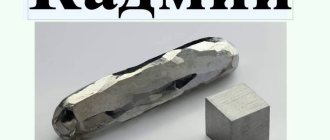Hydrocyanic acid (hydrogen cyanide, HCN) is a colorless volatile liquid with a specific odor of bitter almonds. Easily dissolves in water and organic solvents.
Source: depositphotos.com
This compound is often found because it is part of the seeds of almonds, peach, apricot, cherry, plum and other plants of the Rosaceae family or tinctures of their fruits. All seed kernels of these plants contain the glycoside amygdalin, which is metabolized in the body to form hydrocyanic acid. The largest amount of amygdalin is found in bitter almonds, about 3%, slightly less (up to 2%) is present in apricot kernels.
There is evidence indicating the presence of cyanide (salts of hydrocyanic acid) in the human body under physiological conditions. Cyanides of endogenous origin are found in some biological fluids, in exhaled air, and in urine. It is believed that their normal level in blood plasma can reach 140 mcg/l.
Hydrocyanic acid and its salts (sodium cyanide (NaCN), potassium cyanide (KCN), ammonium cyanide (NH4CN) and others) are widely used in industry and agriculture. Hydrogen cyanide is an essential component in the production of synthetic rubbers, acrylic polymers, chemical fibers, plastics, fragrances, plexiglass, and pesticides. Cyanides are used for extracting gold and silver from ore, hardening and liquid cementation of metals, in galvanoplastic cadmium plating, galvanizing, etc., in the production of pharmaceuticals, in photography, and lithography.
In agriculture, hydrocyanic acid and its derivatives are used to combat rodents, plant pests, and for disinfection.
Hydrogen cyanide is extremely toxic: when ingested in a dose of 50 mg or more or when inhaled in vapors at a concentration of more than 0.4 mg/l, it causes poisoning, resulting in death. If the concentration of the substance in the air exceeds 11 mg/l, then intoxication with hydrocyanic acid vapor is possible even percutaneously. In this case, the penetration of the poison inside is facilitated by the high air temperature of industrial premises and severe physical stress, causing increased blood circulation in the upper layers of the skin.
What is hydrocyanic acid
smells like bitter almonds
Prussic acid is a colorless volatile liquid, which is characterized by the smell of bitter almonds. In medical reference books you can find another name for hydrocyanic acid - hydrocyanic acid or simply hydrogen cyanide. The volatility of this substance is due to its boiling point, which is only 27 degrees Celsius.
Hydrocyanic acid is one of the most poisonous substances known to modern science. Salts of this acid, called cyanides, penetrating into the animal/human body, block the activity of enzymes, contributing to the occurrence of oxygen starvation (tissue hypoxia). The poison affects respiratory function, the cardiovascular and nervous systems, and also causes certain changes in the blood.
Salt[edit | edit code]
Main article: Cyanide
Salts of hydrocyanic acid are called cyanides. All cyanides, like the acid itself, are very poisonous. Cyanides are subject to severe hydrolysis. When storing aqueous solutions of cyanide in the presence of carbon dioxide, they decompose:
- KCN + H 2 O + CO 2 ⟶ HCN + KHCO 3 {\displaystyle {\mathsf {KCN+H_{2}O+CO_{2}\longrightarrow HCN+KHCO_{3}}}}
- KCN + 2 H 2 O ⟶ NH 3 + HCOOK {\displaystyle {\mathsf {KCN+2H_{2}O\longrightarrow NH_{3}+HCOOK}}}
The CN− ion (isoelectronic to the molecule) is included as a ligand in a large number of complex compounds of d-elements. Complex cyanides are very stable in solutions.
Heavy metal cyanides are thermally unstable; in water, except for mercuric cyanide (Hg(CN)2), insoluble. When oxidized, cyanides form salts - cyanates:
2 KCN + O 2 ⟶ 2 KOCN {\displaystyle {\mathsf {2KCN+O_{2}\longrightarrow 2KOCN}}}
Many metals, when exposed to excess potassium cyanide or sodium cyanide, give complex compounds, which are used, for example, to extract gold and silver from ores:
8 N a CN + 4 A u + O 2 + 2 H 2 O ⟶ 4 N a [ A u ( CN ) 2 ] + 4 N a OH {\displaystyle {\mathsf {8NaCN+4Au+O_{2}+2H_ {2}O\longrightarrow 4Na[Au(CN)_{2}]+4NaOH}}}
Where and in what is hydrocyanic acid found?
To avoid hydrocyanic acid poisoning, you need to understand where this substance is found. You can “collide” with hydrocyanic acid:
- In production. Cyanides are used in steel cyanidation, cadmium plating, galvanostatic silver plating, and galvanizing. The production of plastics, pharmaceuticals, rubber, and organic glass also uses cyanide.
- In the seeds of some berries and fruits (cherry, apricot, peach, plum). Almonds also contain a small amount of hydrocyanic acid. Because intoxication can be caused by just 50 grains; it is not recommended to get carried away with bitter varieties of this nut.
- In agriculture. Hydrogen cyanide is used to kill insects, as well as to control field pests (gophers, moles and other rodents).
- In tobacco smoke.
Most often, hydrocyanic acid enters the human body through the respiratory organs, and in some cases through the oral cavity. At extremely high air temperatures, hydrogen cyanide can enter the body through open pores.
Chemical properties[edit | edit code]
A very weak monoprotic acid: its dissociation constant is K
a = 1.32⋅10−9,
pK
a = 8.88 (at 18 °C)[3]. Forms salts with metals - cyanides. Interacts with oxides and hydroxides of alkali and alkaline earth metals.
Hydrocyanic acid vapor burns in air with a violet flame, producing H2O, CO and N2. Autoignition temperature in air is 538 °C. Flash point −18 °C. The explosive concentration of HCN vapors in the air is 4.9–39.7%[3].
In a mixture of oxygen and fluorine it burns, releasing a large amount of heat:
2 HCN + O 2 + F 2 → 2 HF + 2 CO + N 2 + 1020 {\displaystyle {\mathsf {2HCN+O_{2}+F_{2}\rightarrow 2HF+2CO+N_{2}+1020} }} kJ.
Hydrocyanic acid is widely used in organic synthesis. It reacts with carbonyl compounds to form cyanohydrins:
RR′C = O + HCN → RR′C(OH)CN. {\displaystyle {\mathsf {RR'C\!=\!O+HCN\rightarrow RR'C(OH)CN}}.}
With chlorine, bromine and iodine it directly forms cyanogen halides:
X 2 + HCN → XCN + HX . {\displaystyle {\mathsf {X_{2}+HCN\rightarrow XCN+HX}}.}
With haloalkanes - nitriles (Kolbe reaction):
RX + HCN → R − CN + HX . {\displaystyle {\mathsf {RX+HCN\rightarrow R\!-\!CN+HX}}.}
Reacts with alkenes and alkynes by adding to multiple bonds:
HCN + CH ≡ CH → C u + CH 2 = CHCN. {\displaystyle {\mathsf {HCN+CH\!\equiv \!CH{\xrightarrow {Cu^{+}}}CH_{2}\!=\!CHCN}}.} HCN + CH 2 = CH 2 → P d / A l 2 O 3 CH 3 CH 2 CN . {\displaystyle {\mathsf {HCN+CH_{2}\!=\!CH_{2}\ {\xrightarrow {Pd/Al_{2}O_{3}}}\ CH_{3}CH_{2}CN} }.} HCN + RCH = NH → C u + RCH ( NH 2 ) CN . {\displaystyle {\mathsf {HCN+RCH\!=\!NH{\xrightarrow {Cu^{+}}}RCH(NH_{2})CN}}.}
Polymerizes easily in the presence of a base (often explosively). Forms adducts, for example, HCN-CuCl.
When decomposed by water it gives ammonium formate or formamide
HCN + 2 H 2 O ⟶ HCOONH 4 {\displaystyle {\ce {HCN + 2H2O -> HCOONH4}}}
HCN + H 2 O ⟶ HCONH 2 {\displaystyle {\mathsf {HCN+H_{2}O\longrightarrow HCONH_{2}}}}
Main symptoms of hydrocyanic acid poisoning
Signs of hydrogen cyanide poisoning are observed when the acid is ingested, when the vapors of the substance are inhaled, or when it comes into direct contact with the skin.
The speed at which the first symptoms of intoxication appear depends on how exactly the poison entered the body. If acid vapors enter the respiratory system, signs of intoxication appear within a few minutes. A substance that enters the stomach may not manifest itself in any way for a long time. The process of poisoning develops most slowly when acid enters the body through the pores of the skin. Moreover, the higher the temperature in the room and the more open the pores (for example, during physical activity or high humidity), the faster the symptoms of intoxication will become noticeable.
It is customary to identify the following signs of hydrocyanic acid poisoning:
- sore throat;
- bright pink color of the mucous membranes and skin;
- the smell of bitter almonds coming from the mouth;
- rapid heartbeat, intermittent breathing;
- increased salivation;
- dizziness;
- nausea and vomiting;
- fear, panic, shock.
In severe cases of intoxication, symptoms such as hyperemia of the skin, paralysis of the respiratory center, loss of consciousness, convulsions, involuntary urination and defecation may be observed.
A person who has been poisoned by hydrocyanic acid should immediately call an ambulance. While doctors get to their destination, it is necessary to provide first aid to the victim. Otherwise, intoxication can cause coma, and then death.
Poison content in everyday life
Hydrogen cyanide can be hidden in unexpected places and products to which people are most vulnerable. For example, you need to be extremely careful when offering plastic dishes to children and people with allergies. Before pouring water or putting in food, you should make sure that it does not emit an almond smell.
Poor quality plastic that has been manufactured inappropriately may contain a toxic substance that is released in large quantities, especially when heated. It is for this reason that plastic utensils are marked “do not use for hot dishes.” Ignoring these rules can lead to the release of toxic fumes and, as a result, poisoning.
Harmless cups and plastic bottles can undermine your health. Such items are especially dangerous for children whose stomachs have low acidity. They are more susceptible to negative influences than others. To avoid dangerous consequences, you should use glassware or special and safe plastic based on environmentally friendly materials.
Providing first aid for hydrocyanic acid injury
If a person is poisoned with hydrogen cyanide, it is necessary to adhere to a specific algorithm of actions:
- Evacuate the victim from the source of chemical contamination, remove his clothes and shoes, on which a dangerous substance may remain.
- Call an ambulance or take the patient yourself to the toxicology department of a medical institution.
- If the poison enters the digestive system, it is necessary to induce vomiting in the person. You can also do a gastric lavage with a weak solution of potassium permanganate. Please note: these activities are permissible if the person is conscious.
- Provide the patient with peace, take him to a warm, quiet place.
- If necessary, you can give the victim activated charcoal and a laxative (preferably saline).
- If a person has lost consciousness, he should be placed on his side (this will protect him from vomit entering the respiratory tract).
- When clinical death occurs, it is necessary to carry out resuscitation measures.
Before the doctors arrive, people who are nearby should help the person. Clear, coordinated actions will save the victim’s life and help him wait for the doctors to arrive.
The benefits of cherries. What are the benefits of cherries?
It is recommended to eat cherries to increase hemoglobin in the blood, improve immunity and increase the level of vitamins A, E, C and B. Cherries also contain substances that slow down cell aging and reduce the risk of cancer cell formation, improves capillary tone, which equalizes internal pressure , Cherries are also rich in calcium. Thus, cherries serve as a good preventative against cardiovascular diseases. Cherries are rich in elements necessary for the normal functioning of the human body, such as: phosphorus, copper, iodine, sodium, zinc, manganese, calcium, etc. If you are worried about arthritis, then cherries are an excellent natural remedy against it. Due to its positive effect on the intestines, cherries are a good remedy for constipation.
Fresh cherry juice is one of the healthiest, it is rich in vitamins, has an antiseptic and calming effect, and is also low in calories, which is a pleasant bonus for girls on a diet. The calorie content of freshly squeezed cherry juice is only 52 kcal.
But be careful, consuming too many cherries, especially with intestinal diseases or diabetes, can harm the body, so you should not eat too much of them.
Decoctions of cherry leaves are also useful; they have anti-inflammatory effects. It is very easy to prepare; you take either fresh or already dried cherry leaves and pour boiling water over them for 40 minutes, then strain and drink them as tea.
How are therapeutic measures carried out?
Treatments for hydrogen cyanide poisoning include:
- administration of an antidote;
- oxygen inhalation;
- administration of Cordiamin, Adrenaline, Caffeine or Ephedrine in case of low blood pressure;
- administration of Lobelin/Cytiton stimulants in case of respiratory dysfunction;
- administration of vitamin B12, glucose solutions, ascorbic acid;
- resuscitation measures, namely: tracheal intubation, ventilation.
Composition of apricot kernels
The seeds contain:
- vitamins (B17, PP);
- minerals (iron, potassium, phosphorus, calcium, magnesium);
- hydrocyanic acid;
- 0 g protein, 27.7 g fat, 56.3 g carbohydrates (per 100 g kernels).
Speaking about the benefits and harms of apricot kernels, one cannot fail to mention the oil made from them. Moreover, the kernels of some varieties contain up to 70% edible oil. This product, in turn, is rich in:
- fatty acids (linoleic, palmitic, oleic);
- phospholipids;
- vitamins (A, C, B, F);
- tocopherols.
The calorie content of apricot kernels is 440 kcal per 100 g of product. Therefore, they are often recommended to athletes to consolidate mass.
Prevention
In order to avoid poisoning with hydrocyanic acid, it is necessary to pay due attention to preventive measures, namely:
- monitoring the implementation of safety precautions;
- strict selection of employees in accordance with their health indicators;
- ventilation of premises after working with toxic substances;
- the use of mechanized labor at work stages associated with the use of hydrocyanic acid;
- monitoring the level of harmful substances throughout the enterprise;
- ensuring the serviceability of machinery and equipment.
Employees of enterprises working with toxic substances must undergo first aid courses for a person poisoned by hydrocyanic acid.
Notes[edit | edit code]
- ↑ 123
https://www.cdc.gov/niosh/npg/npgd0333.html - Usually, hydrocyanic acid in chemistry means an aqueous solution of hydrogen cyanide
, so the identification of hydrocyanic acid with hydrogen cyanide itself, although widespread, is not entirely correct. - ↑ 1 2 3 4 5 6 7 8 9 10 11 12 13 Smirnov S.K.
Hydrocyanic acid // Chemical encyclopedia: in 5 volumes / Ch. ed. N. S. Zefirov. - M.: Great Russian Encyclopedia, 1995. - T. 4: Polymeric - Trypsin. - P. 352. - 639 p. — 40,000 copies. — ISBN 5-85270-039-8. - Vijayalaxmi C., Murty JS
Hydrogen Cyanide Smell Sensitivity in Some Indian Populations // Acta geneticae medicae et gemellologiae. - 1975. - January (vol. 24, no. 1-2). - P. 169-171. — ISSN 1120-9623. - doi:10.1017/S1120962300022071. [to correct] - Cyanide, inability to smell (undefined)
.
Online Mendelian Inheritance in Man
. Retrieved March 31, 2010. - Bobkov S.S., Smirnov S.K.
, Hydrocyanic acid, 1970, p. 26. - Nekrasov B.V.
, Fundamentals of General Chemistry, vol. 1, 1973, p. 520. - Milkov L. E., Tochilkiv A. I., Khizhnyakova K. I.
Hydrocyanic acid // Great Medical Encyclopedia: in 30 volumes / chapter. ed. B.V. Petrovsky. — 3rd ed. - Moscow: Soviet Encyclopedia, 1984. - T. 23. Sucrose - Vascular tone. — 544 p. — 150,800 copies. - ↑ 1 2 Borowitz JL, Gunasekar PG, Isom GE.
Hydrogen cyanide generation by mu-opiate receptor activation: possible neuromodulatory role of endogenous cyanide. // Brain Res.. - 12 Sep 1997. - T. 768, issue. 768(1-2), No. 1-2. - pp. 294-300. - doi:10.1016/S0006-8993(97)00659-8. - PMID 9369328. - Gunasekar PG, Prabhakaran K, Li L, Zhang L, Isom GE, Borowitz JL.
Receptor mechanisms mediating cyanide generation in PC12 cells and rat brain. // Neurosci Res.. - May 2004. - T. 49, no. 49(1), No. 1. - P. 13-18. - doi:10.1016/j.neures.2004.01.006. - PMID 15099699. - Smith RP, Kruszyna H.
Toxicology of some inorganic antihypertensive anions. // Fed Proc.. - Jan 1976. - T. 35, no. 35(1), No. 1. - P. 69-72. - PMID 1245233. - MSoES website
- P. Clarke, L. Hardy, A. Williams “Executioners”, London, 2008, page 493 (ISBN 978-0-70880-491-9)
- Safety (MSDS) data for hydrogen cyanide
- (Rospotrebnadzor).
No. 606. Hydrocyanide (hydrogen cyanide; hydrocyanic acid) // GN 2.2.5.3532-18 “Maximum permissible concentrations (MPC) of harmful substances in the air of the working area” (Russian) / approved by A.Yu. Popova. - Moscow, 2020. - P. 45. - 170 p. — (Sanitary rules). - ICHL International Labor Organization.
ICHB No. 0492. Hydrocyanic acid (liquid) (Russian).
www.ilo.org/dyn/icsc/
(2018). Retrieved November 12, 2020. - Braker W. and A. L. Mossman.
Matheson Gas Data Book (English). — 6th edition. - Basking Ridge, NJ: Matheson Gas, Lyndhurst, 1980. - 711 p.
Antidote for hydrocyanic acid poisoning
Today, there are two types of antidotes used for intoxication of the human body with hydrogen cyanide. The first group includes drugs such as colloidal sulfur, polythionates, ketones and aldehydes. The therapeutic effect of these antidotes is based on their reaction with acid and the formation of non-toxic products as a result of this interaction.
The second group includes antidotes that promote the formation of methemoglobin in the blood of the victim. This methemoglobin binds hydrocyanic acid, preventing it from reaching cytochrome oxidase. The second group includes drugs such as esters and salts of nitrous acid, as well as methylene blue.
When using hydrocyanic acid in production, agriculture and other areas of activity, it is necessary to exercise extreme caution and, if the risk of poisoning is high, use protective equipment - special suits and gas masks.
If it was not possible to avoid intoxication, it is necessary to provide the person with first aid as soon as possible, take him to the toxicology department, or call an ambulance.
Physical properties[edit | edit code]
Miscible in all proportions with water, ethanol, diethyl ether. It is also miscible with many other alcohols and ethers, aromatic hydrocarbons and carbon tetrachloride[3].
The HCN molecule has a linear structure[6][7] with interatomic distances H-C 0.1064 nm and C≡N 0.1156 nm and is highly polar (electric dipole moment μ = 0.992⋅10−29 C m)[3] .
Anhydrous hydrogen cyanide is a highly ionizing solvent; electrolytes dissolved in it readily dissociate into ions. Its relative dielectric constant at 25 °C is [3] 106.8 (higher than that of water). This is due to the linear association of polar HCN molecules due to the formation of hydrogen bonds.
Melting point −13.29 °C, boiling point +25.65 °C. Density 0.71618 g/cm3 at 0 °C, 0.68708 g/cm3 at 0 °C[3].
Critical pressure 4.95 MPa, critical temperature +183.5 °C, critical density 0.195 g/cm3[3].
Refractive index n
D = 1.26136 (20 °C)[3].
Enthalpy of formation 132 kJ/mol, enthalpy of melting 8.41 kJ/mol, enthalpy of evaporation 25.2 kJ/mol. Enthalpy of combustion −663 kJ/mol. Entropy 201.71 J/(mol K) (at 298 K)[3].
Dynamic viscosity 0.183 mPa s, kinematic viscosity 17.78 mN/m[3].
The electrical resistivity of liquid hydrocyanic acid is 105 Ohm m[3].
Solid hydrocyanic acid at normal pressure exists in two crystalline modifications. At temperatures below −102.78°C it forms crystals of the orthorhombic system, space group I
2
mm
, cell parameters
a
= 0.413 nm,
b
= 0.485 nm,
c
= 0.434 nm,
Z
= 2. Above this temperature it turns into crystals of tetragonal system, space group
I
4
mm
, cell parameters
a
= 0.463 nm,
c
= 0.434 nm ,
Z
= 2[3].
Negative influence
The effects of hydrocyanic acid on humans have been studied by specialists for a long time. Experts say that one of the most pronounced signs is tissue depression, which very quickly leads to an acute shortage of energy resources. This effect guarantees a disruption in the normal functioning of the brain.
The nervous system has to deal with no less serious consequences, as its cells begin to rapidly change their structure. The most dangerous thing is the fact that these changes are recognized as irreversible.
The main feature of the effect of acid on tissue is that even sufficient oxygen in the blood does not become the key to successfully surviving intoxication. The problem is that the poison blocks oxygen from entering reactions where it is vitally needed. As a result, the toxin accumulates in the blood.
Pathologists note that those who died from poisoning with this substance have characteristic external and internal signs:
- bright scarlet color of the skin;
- red mucous membranes.
In addition to the listed systems of the body, the spleen suffers from the effects of hydrocyanic acid on humans. The reason is that the body “thinks” that it really does not have enough oxygen and begins a rescue operation to restore its amount to normal. In search of a solution to the problem of homeostasis, there is an active release of blood cells from the spleen.
But the effect on the liver, heart and some other organs is not so clear.
Application of apricot kernels
Medicine. Apricot kernel oil is the basis of many medicines. The bones themselves are considered natural “chemotherapy.” But it is important to know how to take apricot kernels for cancer. Cyanide, which is contained in the nuclei, destroys cancer cells in small doses, but healthy cells begin to suffer from large quantities.
You can consume no more than a few kernels per day. It is best to supplement their intake with your favorite fruits.
Apricot kernels brewed as tea are used for cardiovascular diseases. They are also useful for bronchitis and upper respiratory tract diseases. The high calorie content of apricot kernels allows us to recommend them as a food supplement for heavy physical activity.
Apricot oil is widely used in cosmetology. The substances contained in it have a beneficial effect on the skin, slowing down the process of its withering and improving the condition of nails and hair.
Cooking. Is it possible to eat apricot pits? The answer, of course, is yes. Moreover, apricot kernels are often used by confectioners to make glaze, caramel, sweets, yoghurts, creams, ice cream, waffles and various pastries. The kernels of some apricot varieties are used as a substitute for almonds.
Experienced chefs recommend adding crushed apricot kernels to compotes, jams, baked goods and ice cream. This gives the dish a distinct apricot hue.
The harm and benefits of apricot kernels are closely related to the health status of a particular person. Therefore, be sure to consult your doctor before using this product.










